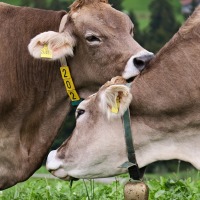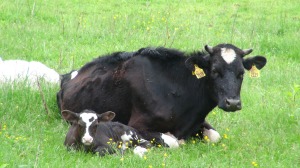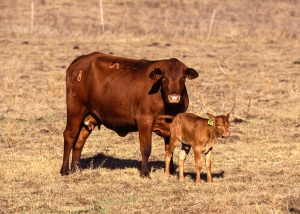

How Performance Reveals the Importance of Affection and Care in Livestock
 Posted by SLN Staff on Oct 21st, 2015 | Comments Off on How Performance Reveals the Importance of Affection and Care in Livestock
Posted by SLN Staff on Oct 21st, 2015 | Comments Off on How Performance Reveals the Importance of Affection and Care in Livestock 

As we do an analysis on the livestock industry, we see a general situation throughout the world which is a huge increase in the demand for livestock products and not a concurrent increase in the availability of livestock products.
Detailed interdisciplinary research provides us clues that we have not achieved our end goals. The profession or industry of livestock farming has ancient roots, many of which are ultimately linked with the Stone Age. The livestock industry is not limited to a particular region or a country. This is something global and despite of being global it’s oftentimes considered to be the backbone of some country’s economies.
For someone who might not have been aware of the livestock profession or the industry, I would state that this industry has mainstream contribution towards the economy and foreign exchange around the world. It is a huge worldwide industry!
And yet, livestock raised around the world are not wild animals. They are not like lions, tigers and bears running wild where they live in the world.
 Livestock production demands care and proper upbringing. And they are not wild animals, they are domestic animals. So how can we expect a domestic animal to survive and produce at the same time without proper attention and deliberation?
Livestock production demands care and proper upbringing. And they are not wild animals, they are domestic animals. So how can we expect a domestic animal to survive and produce at the same time without proper attention and deliberation?
Livestock care is a responsibility. Small or big, all kinds of livestock should be cared for like domestic animals we consider pets (dogs, cats, etc.) in order to get maximum production. We must treat them at least a little as domestic pets and then also as livestock producers. This duality of care should not be forgotten for optimum production.
People who raise livestock often have concerns related to the best care of their beloved animals. Often this care depends at least partially on their feeding methods. These feeding methods have varied with the passage of time.
Currently in parts of the world, some raise their calves on nurse cows for the early stages of their lives, and later at some stages fed from a barrel with waste milk from a number of cows so that the waste milk is not discarded. The special thing is that the nurse cows are chosen with great care.
Smart breeding programs, customized nutrition, specific animal care, modern housing and environmental technologies. are all also part of livestock care. And yes, all of these elements of livestock care are also what we see in domestic pet care.
So if you are a livestock producer or are thinking about becoming one, how does this make you feel? Our goal for providing information about sustainability and specifically sustainable agriculture is first and foremost to get interested people to think and react. We believe that if you think and react, you will ultimately continue to seek more information to help you make decisions. If you do this, you will continue to make yourself better.
 So tell us we are “full of it” if you do not agree with our thoughts about the importance of care and attention to livestock we would give to our pet cat, or dog! Get excited. We are passionate, we want to think and we will react. We are “big boys and girls” as they say, and we want to hear opinions from smart folks like you.
So tell us we are “full of it” if you do not agree with our thoughts about the importance of care and attention to livestock we would give to our pet cat, or dog! Get excited. We are passionate, we want to think and we will react. We are “big boys and girls” as they say, and we want to hear opinions from smart folks like you.
Please comment below and give us your thoughts. Share this article with your friends to let them either agree with us or to take shots at us. Just use any of the social media you enjoy by clicking on the little bar that is floating on this page. It will be very easy.
Thanks for spending time with us. Come back and read more of our stuff. Or maybe, you would like to write for us. We are always looking for great new material about making the planet better!
Have you tried our DIY systems? If you have, please provide us your feedback on it. If you haven’t tried it, now is the best time to obtain a DIY system and try it yourself. To obtain your DIY system information and how to get seeds please contact us at 303-495-3705.
As we asked you before, did you find our blog informative? Please put down your comments in the comment box below or on our Facebook page, and let us know your thoughts. It would inspire us for our future blogs.
Source: Sustainable Livestock Nutrition
Related articles and resources:
- Steps You Should Take for Sustainable Livestock Production | Sustainable Livestock Nutrition
- Livestock Farming with Care: towards sustainable production of animal-source food
- Doomsday Livestock Care Guide | eFoodsDirect Blog
- Workshops and Articles Highlight Innovations in Livestock Care
- Legislating Livestock Care Standards
- Livestock Care |Tractor Supply Co.
- 2.2 Demand and supply affecting livestock systems — AgriCultures Network
- Ohio Department of Agriculture | Ohio Livestock Care Standards
- Livestock Care & Forage Management for Fall & Winter | Sustainable Livestock Nutrition





